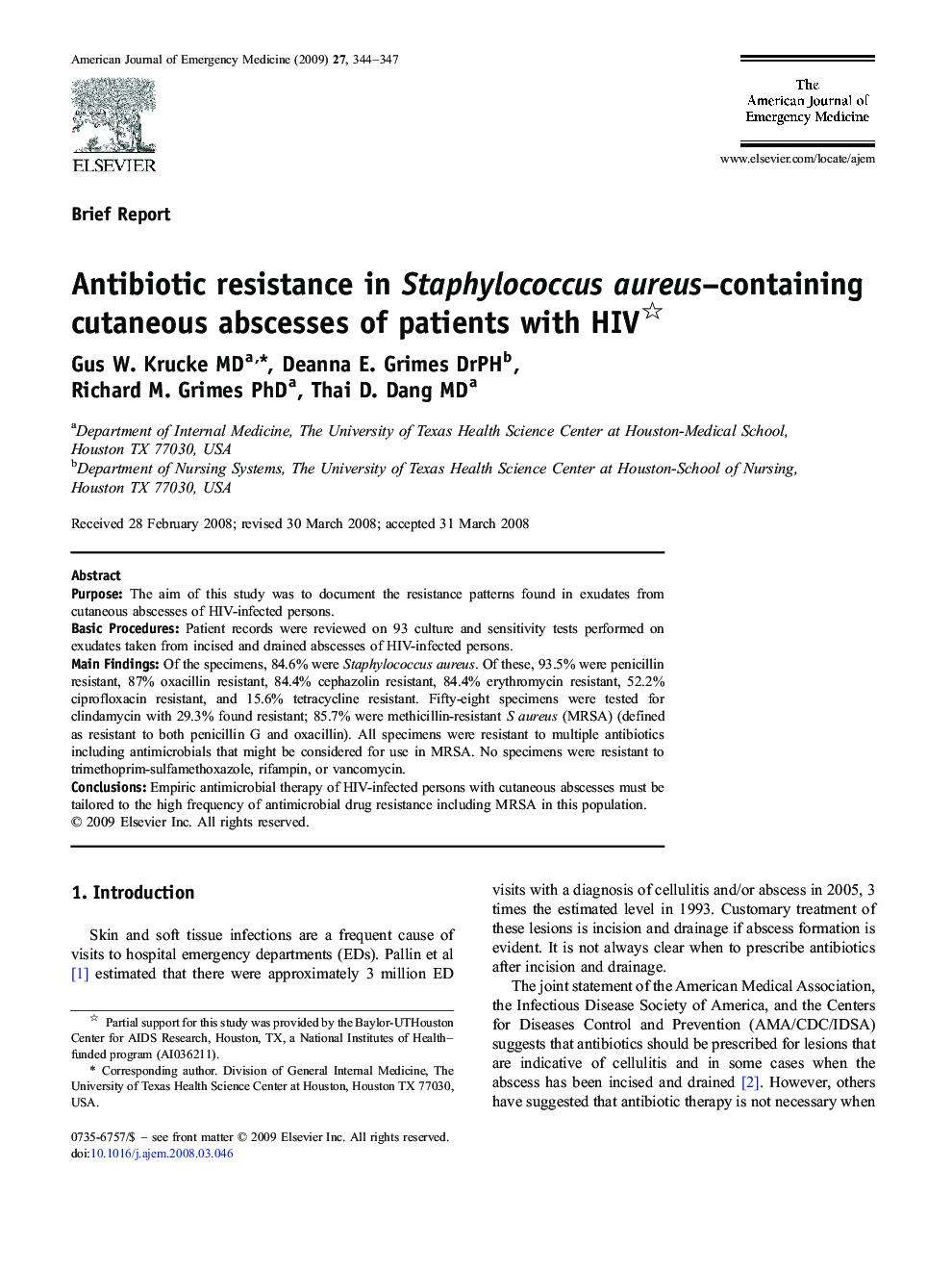| Article ID | Journal | Published Year | Pages | File Type |
|---|---|---|---|---|
| 3226666 | The American Journal of Emergency Medicine | 2009 | 4 Pages |
PurposeThe aim of this study was to document the resistance patterns found in exudates from cutaneous abscesses of HIV-infected persons.Basic ProceduresPatient records were reviewed on 93 culture and sensitivity tests performed on exudates taken from incised and drained abscesses of HIV-infected persons.Main FindingsOf the specimens, 84.6% were Staphylococcus aureus. Of these, 93.5% were penicillin resistant, 87% oxacillin resistant, 84.4% cephazolin resistant, 84.4% erythromycin resistant, 52.2% ciprofloxacin resistant, and 15.6% tetracycline resistant. Fifty-eight specimens were tested for clindamycin with 29.3% found resistant; 85.7% were methicillin-resistant S aureus (MRSA) (defined as resistant to both penicillin G and oxacillin). All specimens were resistant to multiple antibiotics including antimicrobials that might be considered for use in MRSA. No specimens were resistant to trimethoprim-sulfamethoxazole, rifampin, or vancomycin.ConclusionsEmpiric antimicrobial therapy of HIV-infected persons with cutaneous abscesses must be tailored to the high frequency of antimicrobial drug resistance including MRSA in this population.
